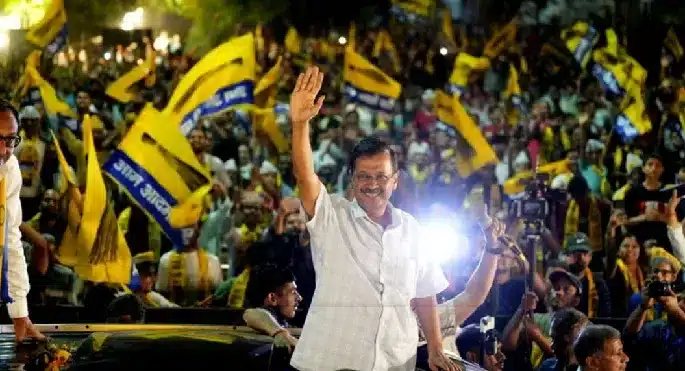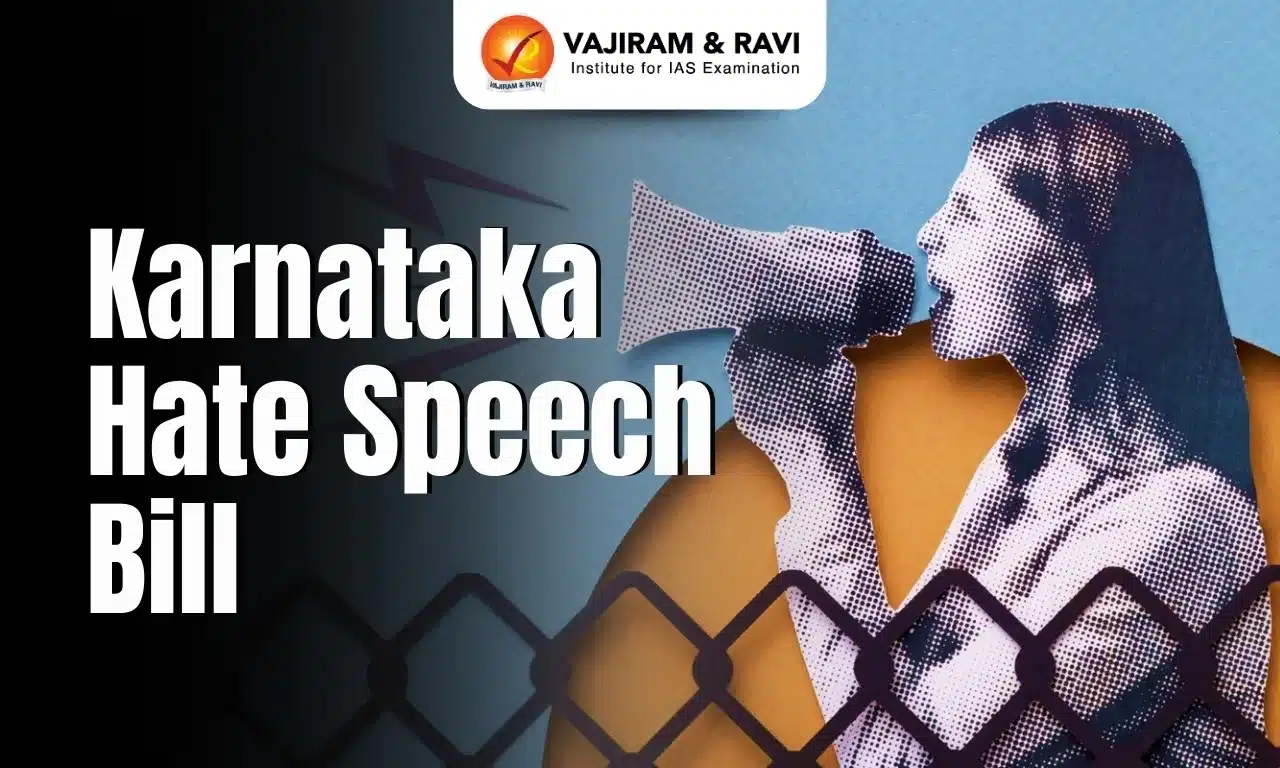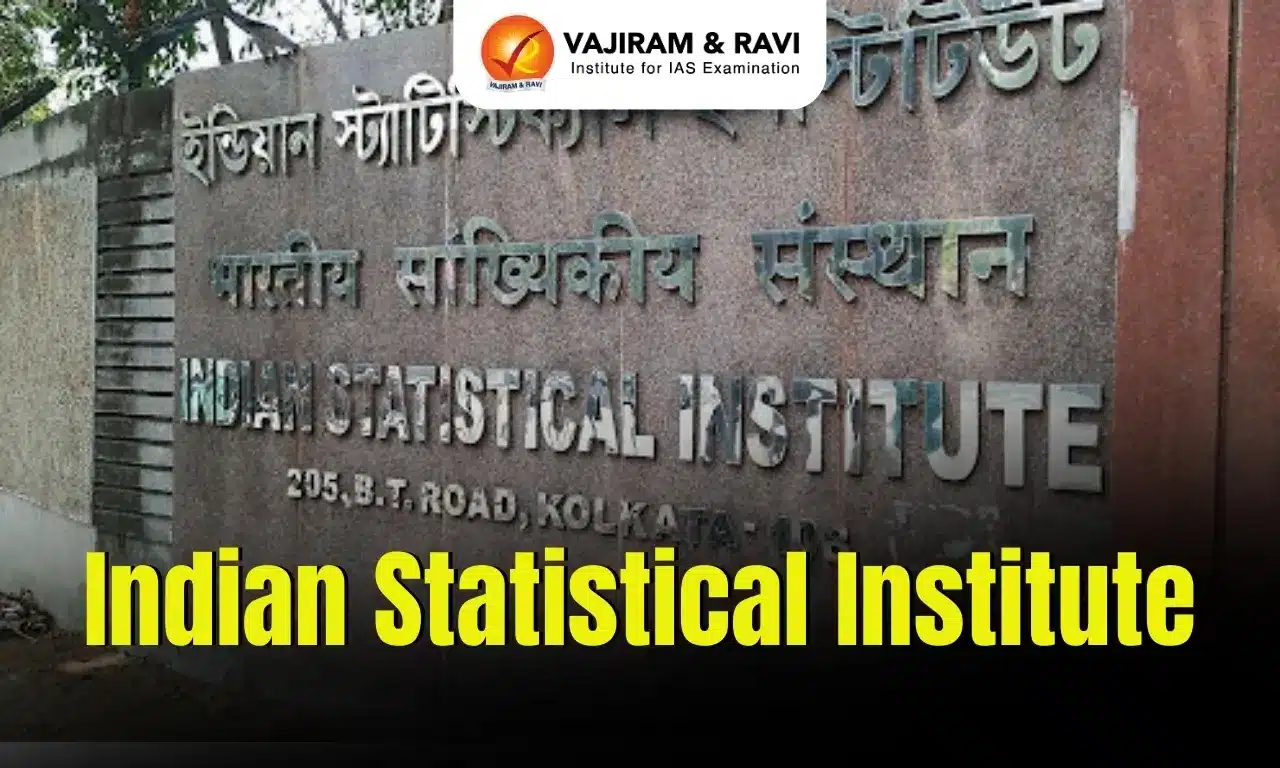What’s in today’s article?
- Why in News?
- What is Section 19 of the PMLA?
- Questions raised over ED’s power to arrest under Section 19 of PMLA
- Analysis of the remarks made the apex court
Why in News?
The Supreme Court has granted interim bail to Delhi Chief Minister Arvind Kejriwal. A two-judge bench of SC referred some questions on the ED’s power to arrest under Section 19 of the stringent Prevention of Money Laundering Act (PMLA), 2002 to a larger bench.
What is Section 19 of the PMLA?
- About
- Section 19 of the PMLA grants the ED Director the authority to arrest individuals.
- According to Section 19(1):
- if the Director “has on the basis of material in his possession, reason to believe (that reason for such belief to be recorded in writing) that any person has been guilty of an offence punishable under this Act, he may arrest such person and shall, as soon as may be, inform him of the grounds for such arrest.”
- Power of arrest under this section
- Under Section 19 of the PMLA, an ED officer must have “reason to believe,” based on the material in their possession, that the accused is guilty of the offence. This belief must be recorded and communicated to the accused at the time of arrest.
- Essentially, the provision states that the arrest has to be on the basis of material in possession of evidence with the ED.
- However, at times, the ED emphasizes the phrase “reason to believe” in Section 19.
- It contends that the Director’s belief, which is subjective and can evolve during the investigation, is sufficient for an arrest without necessarily delving into the materials.
- Under Section 19 of the PMLA, an ED officer must have “reason to believe,” based on the material in their possession, that the accused is guilty of the offence. This belief must be recorded and communicated to the accused at the time of arrest.
- Stricter than ordinary criminal law
- This standard under Section 19 of PMLA is stricter than ordinary criminal law, where police can arrest based on reasonable suspicion under Section 41 of the CrPC.
- The PMLA also imposes a reverse burden of proof, requiring the accused to prove their innocence, unlike in ordinary law where the prosecution must prove guilt.
- For bail under the PMLA, the court must find prima facie that the accused is not guilty.
- In the Vijay Madanlal Chaudhary case, the SC upheld the stringent bail provisions.
- The Court noted that the narrower power to arrest under the PMLA justified these stricter requirements.
- The legal validity
- In the 2022 Vijay Madanlal Chaudhary ruling, the Supreme Court upheld the constitutional validity of Section 19 of the PMLA.
- While the court did not address the necessity of arrest or the standard of evidence required (proportionality aspects), it affirmed that the extensive power to arrest is not unconstitutional.
- The SC endorsed a key argument by the ED that only high-ranking officials, after recording reasons in writing, can authorize an arrest.
- The court noted that granting this power to high-ranking officials, combined with the requirement to provide reasons in writing, ensures reasonableness and minimizes the risk of arbitrariness.
Questions raised over ED’s power to arrest under Section 19 of PMLA
- Observations made by the SC
- The Supreme Court has clarified the interpretation of “reasons to believe” under Section 19 of the PMLA.
- The court held that the ED must meet a higher standard, requiring reasons that are almost equivalent to “evidence admissible in court” to establish guilt, rather than just a subjective finding by the ED.
- The SC emphasized that the material in possession must lead the designated officer to form an opinion of guilt based on admissible evidence, not on inadmissible evidence.
- The court highlighted that arrests must not be arbitrary and must be based on valid “reasons to believe” that adhere to legal parameters.
- The Supreme Court emphasized that the clear language of Section 19(1) must be upheld to ensure stringent safeguards against pre-trial arrests during ongoing investigations.
- The court distinguished between the power to arrest and the process of framing charges and conducting a trial.
- It noted that an individual can face charges and undergo trial while on bail, underscoring that arrest should not be equated with the commencement of trial proceedings.
- Need to scrutinize the ED’s use of its arrest powers
- The Supreme Court did not rule on the legality of Kejriwal’s arrest but found sufficient grounds to scrutinize the ED’s use of its arrest powers.
- The court stated that this issue needs “in-depth consideration” by a larger Bench.
- Meanwhile, given that the Delhi CM Kejriwal had been incarcerated for over 90 days, the court ordered his release on bail until the larger Bench addresses the matter.
Analysis of the remarks made the apex court
- Necessity for clear guidelines to prevent potential misuse of authority
- The ruling, while deferring the key question of when an arrest is legally necessitated to a larger Bench, raises significant concerns about how the ED exercises its extensive powers under the PMLA.
- This decision highlights the need for a thorough examination of the ED’s arrest procedures and underscores the necessity for clear guidelines to prevent potential misuse of authority.
- Raised the bar for arrest by the ED under the PMLA
- Arrest, after all, cannot be made arbitrarily and on the whims and fancies of the authorities. It is to be made on the basis of the valid ‘reasons to believe’, meeting the parameters prescribed by the law.
Q.1. What is Enforcement Directorate (ED)?
The Enforcement Directorate (ED) is a specialized financial investigation agency in India under the Department of Revenue, Ministry of Finance. It enforces laws related to economic crimes, such as the Prevention of Money Laundering Act (PMLA) and the Foreign Exchange Management Act (FEMA), focusing on combating money laundering and foreign exchange violations.
Q.2. What is Prevention of Money Laundering Act (PMLA), 2002?
The Prevention of Money Laundering Act (PMLA), 2002, is an Indian law enacted to combat money laundering. It provides a legal framework for investigating and prosecuting money laundering offenses, seizing assets, and ensuring compliance with financial regulations.
Source: Kejriwal gets interim bail in ED’s excise policy case: The questions on agency’s powers to arrest | Indian Express | The Hindu
Last updated on November, 2025
→ Check out the latest UPSC Syllabus 2026 here.
→ Join Vajiram & Ravi’s Interview Guidance Programme for expert help to crack your final UPSC stage.
→ UPSC Mains Result 2025 is now out.
→ UPSC Notification 2026 is scheduled to be released on January 14, 2026.
→ UPSC Calendar 2026 is released on 15th May, 2025.
→ The UPSC Vacancy 2025 were released 1129, out of which 979 were for UPSC CSE and remaining 150 are for UPSC IFoS.
→ UPSC Prelims 2026 will be conducted on 24th May, 2026 & UPSC Mains 2026 will be conducted on 21st August 2026.
→ The UPSC Selection Process is of 3 stages-Prelims, Mains and Interview.
→ UPSC Result 2024 is released with latest UPSC Marksheet 2024. Check Now!
→ UPSC Prelims Result 2025 is out now for the CSE held on 25 May 2025.
→ UPSC Toppers List 2024 is released now. Shakti Dubey is UPSC AIR 1 2024 Topper.
→ UPSC Prelims Question Paper 2025 and Unofficial Prelims Answer Key 2025 are available now.
→ UPSC Mains Question Paper 2025 is out for Essay, GS 1, 2, 3 & GS 4.
→ UPSC Mains Indian Language Question Paper 2025 is now out.
→ UPSC Mains Optional Question Paper 2025 is now out.
→ Also check Best IAS Coaching in Delhi

















